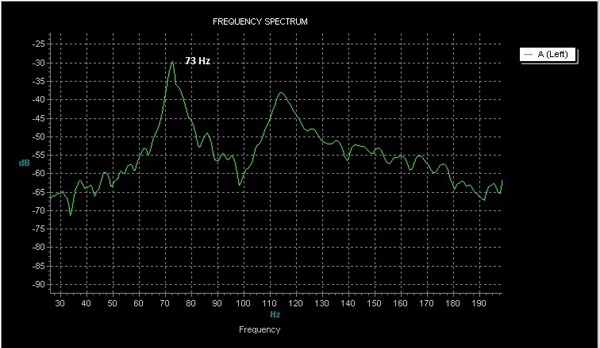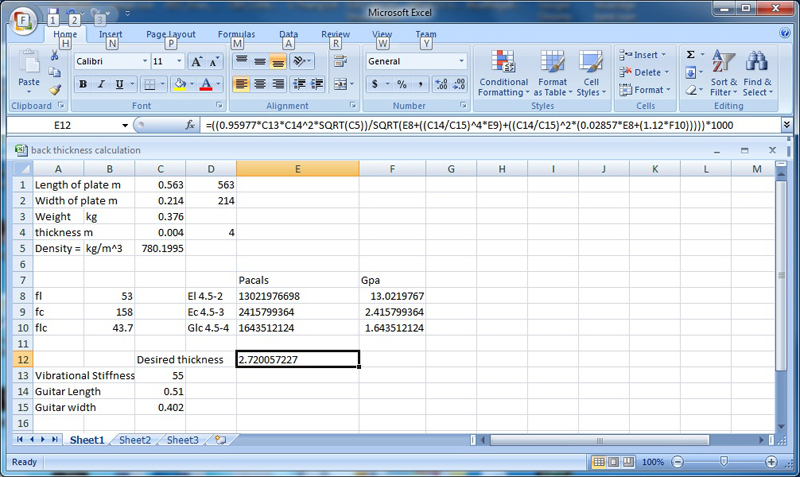D28 #13 Guitar blog:
Dec 30th 2013
I am just starting my first possible commission, a East Indian Rosewood and Sitka Spruce Martin style D28.
I have not done all that much but I have worked with my potential customer to nail down the wood
selection. This one will not have a bevel or be a cutaway, rather it will be a more
straight forward guitar.
My plan right now besides the EIR and Sitka is to have curly maple bindings, herringbone prufling on the top, a zippered back strip. The Rosette will harken to Martin with a ring design the outside rings will be a bwbbwb pattern the inner ring will be a thin ring of walnut with black purflings inside and out. I have BRW for the fretboard, headstock veneer and the bridge.

This is the third guitar that I will be documenting the wood's measured characteristics and building influenced on those measurements. John Link asked in a previous post so I will provide the information as I go along. I am hesitant to include this information as it mostly has meaning with in the context of Gore\Gilet Contemporary Acoustic Guitar Design book. The authors spent a bunch of time and effort describing the theory and methodology; I am not sure I can do the work justice. But here goes ...
My purpose for doing this is two fold:
1 - Documentation of the characteristics of the plates before I build
2 - A deterministic way to determine a target final thickness for the top and back.
Basically a methodical and repeatable way to do tap tuning.
The method used is to combine a bunch of measurements of the wood and the guitar to be built with a user input of a target vibrational stiffness (really a target frequency). The book states that they found a set of values that they use for target vibrational stiffness by taking the information from a set of representative sounding guitars and back calculating a target frequency. This is important to note that they are not saying that there is a magical target frequency, rather they are saying that if you build to a consistent target frequency you will get more consistent results. A higher target will give a thicker plate and lower target will give a thinner plate. I started with their numbers. As I build more guitars and I want to change my sound I may deviate from where I started.
Before doing anything I used my thickness sander to take them to 4 mm. At this time both sets of plates had even thickness as I sanded past the saw cuts. The 4 mm is not important it was a thickness where I ended up with clean plates.
My first set of measurements were to record the height, width, thickness and weight of the top and back plates and to use that information first to calculate the woods density. ( just the weight divided by the product of the height, width and thickness.
With each of the plates I use a set of measurements to determine the long, cross and diagonal stiffness of the plates. I used a free product Visual Analyzer to sample and display a spectrum graph of the tap tones obtained by holding the plates at three different nodes and tapping on corresponding anti nodes of the plate. This gave 3 charts like the one I have below.

This graph is for the long grain vibrational mode of the top. The first peak 73Hz is a clear indication of the long grain frequency. One can also see the cross grain frequency with the peak around 113. I have another graph I used to determine the cross grain mode where I held and tapped in locations that suppressed the long grain vibrational mode.
I entered all of the above mentioned measurement and my target vibrational stiffness into a spread sheets that I made from the information in the book and ended up with a target thickness of 3 mm for the top and 2.7 for the back. You can see the two examples I have for the Sitka top and the EIR back.


January 5th 2014
I made a bit more progress this weekend. Both of my kids are back off to college so it is quiet in the house. I do miss them already.
Relative to my last guitar this is a fairly straight forward guitar build. After all of that highly figured wood I have been using the East Indian Rosewood is really easy to bend. I cycle the heat twice on each side and the sides came out with virtually no spring back. They just dropped into the mold.
.jpg)
.jpg)
.jpg)
I glued the end blocks on. I have had a long scale neck in my shop for awhile with a heel block so I am going to use it for this guitar. I cut the tail block out of 1/4 birch plywood.
.jpg)
.jpg)
I profiled the top and the back (28' for the top and 15' for the back) with sanding disks both before and after I put the kerfed linings on.
.jpg)
I did get new clamps for the kerfed linings. I have a variety of small wimpy clamps. On the last guitar while futzing with them to get the linings rims I decided to get a bunch of bigger clamps. These guys clamped the kerfed linings right down.
.jpg)
I had some strips of Koa trimmed off the sides of a previous project so I used it to reinforce the sides.
.jpg)
.jpg)
For the first time I was able to use my shooting board and a plane to get a clean joint while jointing the plates. Usually I need to clean up a little with sandpaper. I am not sure what happened, it may be the lack of figured wood or the fact that the plane is fairly well tuned. I was going to put in the zipper strip but the back was so nicely book matched that I am considering leaving it out. I will route a rebate if I decide to add it later.
.jpg)
.jpg)
.jpg)
January 6th 2014
I put in the rosette this morning. For the outer rings I jammed two of the BWB purfling into each of the slots I routed making bwbbwb. I then routed a rebate for a claro walnut ring framed with black fiber strips. With the rings I wanted to suggest a martin rosette, but using a wood ring rosette more in my style.
.jpg)
.jpg)
.jpg)
Next Page
| 
